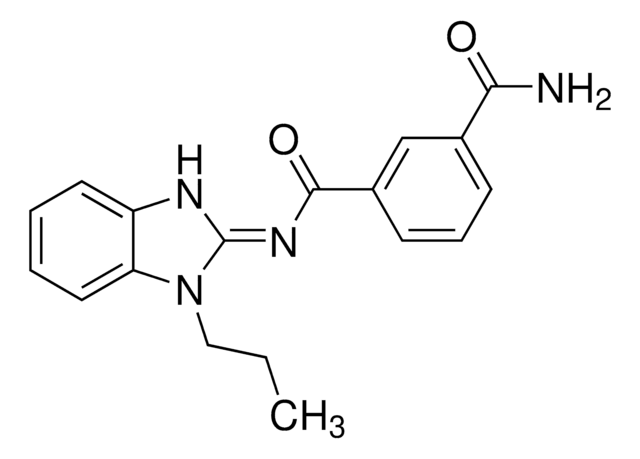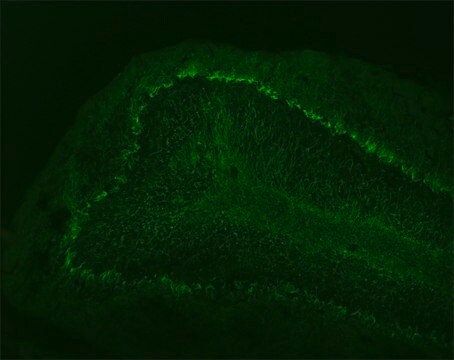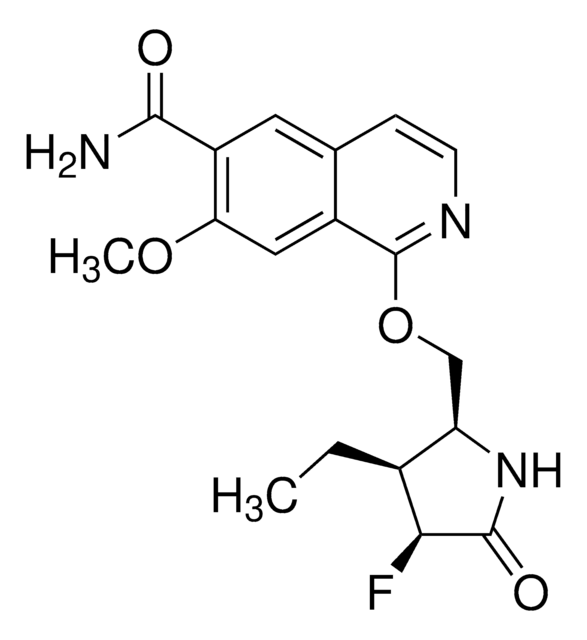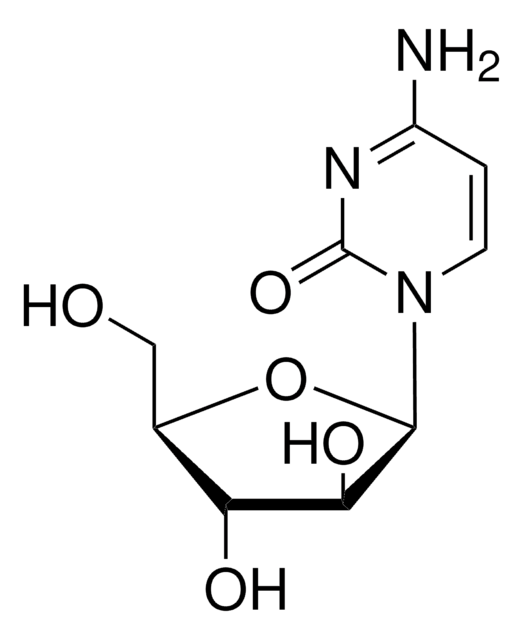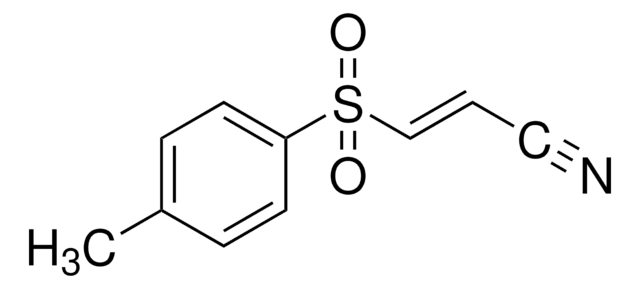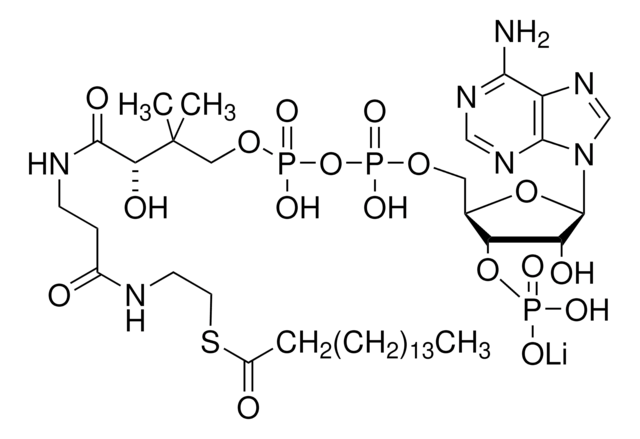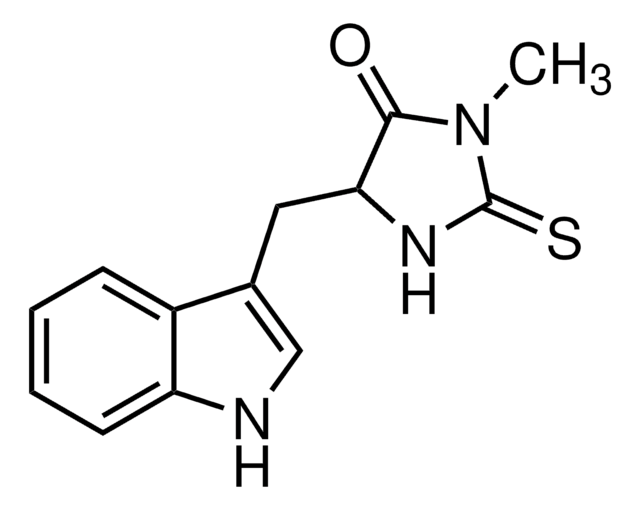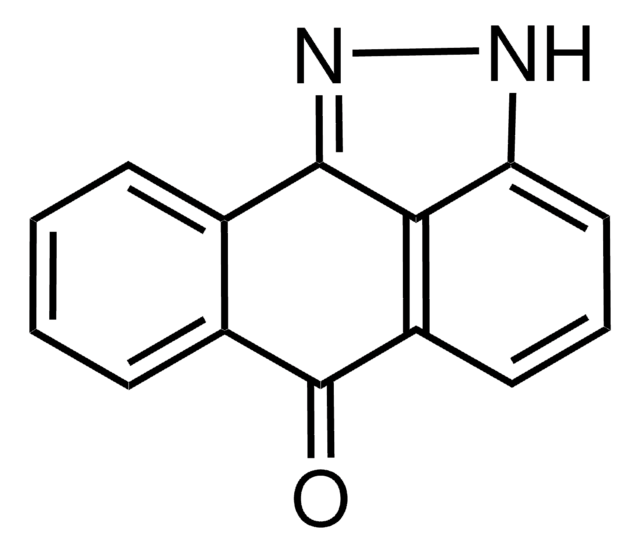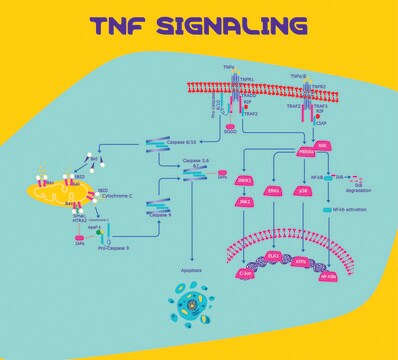O9890
5Z-7-Oxozeaenol
≥98% (HPLC), powder, TAK1 inhibitor
Sinónimos:
C 292, F 152, FR148083, L 783279, LL-Z1640-2
About This Item
Productos recomendados
product name
5Z-7-Oxozeaenol, ≥98% (HPLC)
assay
≥98% (HPLC)
form
powder
color
white to off-white
solubility
DMSO: >10 mg/mL
storage temp.
2-8°C
SMILES string
COc1cc(O)c2C(=O)O[C@@H](C)CC=CC(=O)[C@@H](O)[C@@H](O)C\C=C\c2c1
InChI
1S/C19H22O7/c1-11-5-3-7-14(20)18(23)15(21)8-4-6-12-9-13(25-2)10-16(22)17(12)19(24)26-11/h3-4,6-7,9-11,15,18,21-23H,5,8H2,1-2H3/b6-4+,7-3-/t11-,15-,18+/m0/s1
InChI key
NEQZWEXWOFPKOT-BYRRXHGESA-N
Application
- as transforming growth factor β-activated kinase 1 (TAK1) inhibitor to treat human colon cancer cells
- as TAK1-specific inhibitor to provide intraperitoneal injection to mice for aortic banding
- as TAK1 inhibitor to treat cells for luciferase reporter assay
- to test growth and differentiation factor 2 (GDF2)-mediated anoikis
Biochem/physiol Actions
Features and Benefits
Storage Class
11 - Combustible Solids
wgk_germany
WGK 3
flash_point_f
Not applicable
flash_point_c
Not applicable
Certificados de análisis (COA)
Busque Certificados de análisis (COA) introduciendo el número de lote del producto. Los números de lote se encuentran en la etiqueta del producto después de las palabras «Lot» o «Batch»
¿Ya tiene este producto?
Encuentre la documentación para los productos que ha comprado recientemente en la Biblioteca de documentos.
Los clientes también vieron
Artículos
The extracellular signal regulated kinase (ERK1 and ERK2) pathways are activated by mitogens and play an important role in controlling cell growth and differentiation.
The mitogen-activated protein kinase (MAPK) family consists of both stress activated (SAPK) and mitogen-activated (MAPK) protein kinases. They form a network of signal transduction cascades that mediate cellular responses to a diverse range of stimuli, including growth factors, chemical or osmotic stress, irradiation, bacterial infection and proinflammatory cytokines.
Contenido relacionado
Discover Bioactive Small Molecules for Kinase Phosphatase Biology
Nuestro equipo de científicos tiene experiencia en todas las áreas de investigación: Ciencias de la vida, Ciencia de los materiales, Síntesis química, Cromatografía, Analítica y muchas otras.
Póngase en contacto con el Servicio técnico
